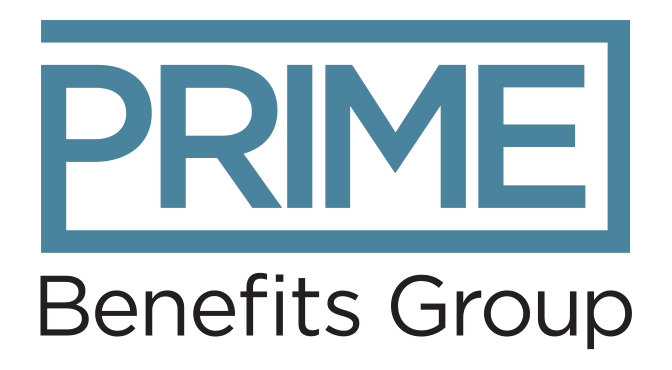- Have a question?
- 613-89-Prime (77463)
- 1-866-950-3667
- info@primebenefitsgroup.com
How Employer Matching Can Improve Retirement Readiness


Retirement can feel like a distant dream for many Canadian workers in today’s economic environment. The piggy bank just isn’t filling up as fast as it should, and with the rising cost of living, countless Canadians are struggling to save and preparing to face the harsh reality that their golden years may not be as shiny as anticipated.
A recent survey found that Canadians who rent or have mortgage payments are putting off saving for retirement. Whether it’s the hefty mortgage payments or lingering consumer debt, many find themselves walking a tightrope between paying off what they owe and putting away funds for the future. It’s a delicate balancing act that often leaves retirement savings on the back burner.
Employer matching contributions can provide much needed financial support, offering employees an opportunity to save for retirement with the bonus of additional savings from their places of work.
Rethinking Retirement
The COVID-19 pandemic threw a curveball at many Canadian workers, shaking up financial stability and casting uncertainty over the road to retirement. With job losses, reduced hours, and economic turmoil, Canadians found themselves facing unprecedented challenges that impacted their retirement readiness.
During the first few months of the pandemic, a poll revealed Canadians were becoming increasingly concerned about the impact the pandemic would have on their retirement savings, with 23 per cent of respondents unable to contribute to their retirement savings since the pandemic began. For some, the focus shifted from long-term retirement planning to immediate survival as they scrambled to cover basic expenses. Others faced tough decisions, dipping into their retirement savings to make ends meet or delaying retirement plans altogether in the face of economic uncertainty.
The darkest days of the pandemic are behind us, but the shadow of retirement uncertainty still lingers. While over 90 per cent of Canadian workers say they are saving for retirement, just 69 per cent are confident they’ll be able to save enough. There is now a pressing need, more than ever, for employers to help bridge the retirement savings gap.
How Employer Matching Contributions Can Help
Registered Retirement Savings Plan (RRSP) matching involves an employer offering a group RRSP that employees enroll in. In this setup, employees can choose to contribute to the RRSP and employers can either make direct contributions to the plan or match the contributions made by the employee. For instance, an employer might match contributions dollar-for-dollar, up to a certain limit, or based on a percentage of an employee’s salary. If an employee puts aside five per cent of a paycheque, an employer could match that with another five per cent – or – offer a different matching scheme, like matching three per cent for every five per cent an employee is able to save.
By incentivizing employee participation in retirement plans, employers can enable their workforce to take charge of their financial futures. Employees are more motivated to save when they know their efforts will be matched by their employer. Canadian workers dealing with the dual pressures of saving for retirement and managing day-to-day expenses can find comfort in the fact that their employers are invested in their long-term success.
A report, which polled U.S. employees saving into a 401(k), for instance, found that nearly half of respondents started saving for retirement because their organization offered a matching contribution. By offering matching contributions, small and medium-sized businesses can create a culture of financial wellness, where employees feel supported in their retirement journeys. This, in turn, can help lead to higher levels of employee engagement, satisfaction and retention – a win-win for employers and employees alike.
Key Considerations
Before implementing employer matching contributions, it’s important to consider the following:
- Employee Needs: Consider conducting a survey, host a focus group or provide individual consultations to understand what matters most to your employees. Some employers may wish to prioritize flexibility in contribution options, while others may value investment choices that align with their risk tolerance and financial goals. By offering matching contributions that meet diverse employee needs, you can maximize participation and engagement in the retirement plan.
- Matching Policies: To avoid confusion and ensure fairness, create clear matching policies. This includes defining the matching formula, such as dollar-for-dollar or percentage-based matches, as well as outlining eligibility criteria based on factors like tenure or employment status.
- Communication: Engagement is essential to your plan’s success. Research shows that only a quarter of private sector workers participate in an employer-sponsored pension plan. Consider implementing a communications campaign to educate employees about the benefits of participating in the retirement plan and how matching contributions can help them achieve their long-term financial goals.
- Monitoring & Adjusting: Once your plan is in place, be prepared to monitor its effectiveness and make adjustments as needed. Review participation rates, contribution levels and overall program performance.
Planning for the Future
By offering matching contributions, businesses can attract top talent and play a significant role in shaping a brighter retirement future for Canadian workers. Contact us so we can work together to strengthen your offerings.
Suggested Reading
Retirement Ready? Why Most Canadians Say ‘No’
How to Optimize Employee Benefits for Tax-Smart Savings
Additional Resources